GSM-socket "Telemetrika"
I am already the happy owner of a GSM outlet from the company “Dadzhet”, I wrote about it . During the operation, the device showed itself as trouble-free, necessary and efficient, so it was very nice to increase the fleet of such devices with a new remote outlet, this time of domestic production. So, "Telemetrika T4".

High-quality packaging, detailed instructions, pretty looking device.
')
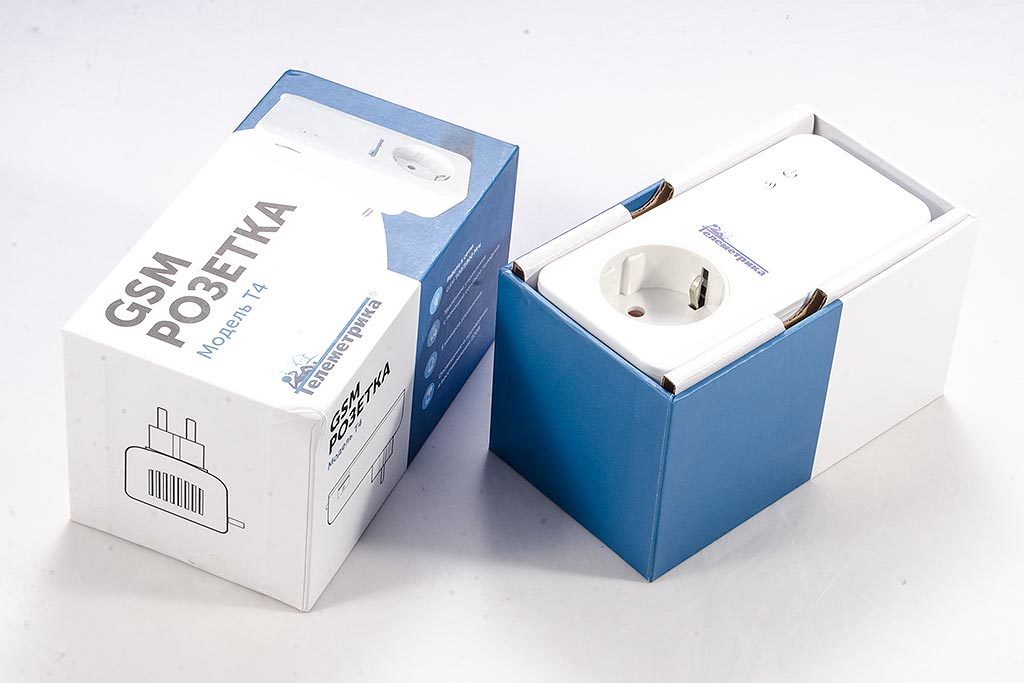
Although, frankly, in terms of design, the Senseit socket looks more interesting - not so square, and the green rims fit it.

However, this, of course, not fundamental. So, what can such an outlet? For a start - and for me this is the main function - it has a thermal sensor.
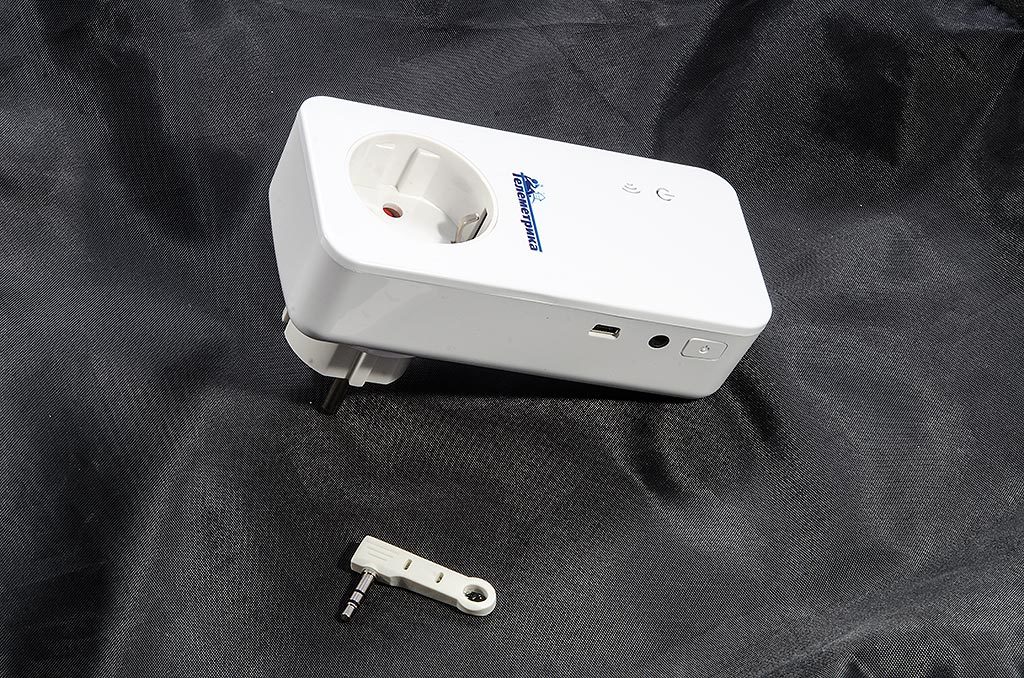
It measures the temperature of the air in the room in which it is installed (It is also possible to install outdoors - the permissible modes for temperature / humidity allow, but it is necessary to close from water and the lower limit of measurement is minus ten).
I have an outlet installed in a country house, and I have the opportunity to control whether there is a critical drop (pipes will freeze!) Or a critical increase (is there a fire?) Of temperature. The socket allows you to adjust the temperature range, the output of which sends a signal SMS to either side.

In my specific conditions, this is important, but there are a number of functions that may be useful. For example - run load on the temperature.

Upon reaching the limits of the specified range, the socket can move from the “Load Off” position to the “Load On” position. If the “Heating” mode is set, then it is at the lower limit, if “Cooling”, then it is at the top. All this is configured by submitting intricate SMS commands, so it’s better not to lose the leadership with their table ...
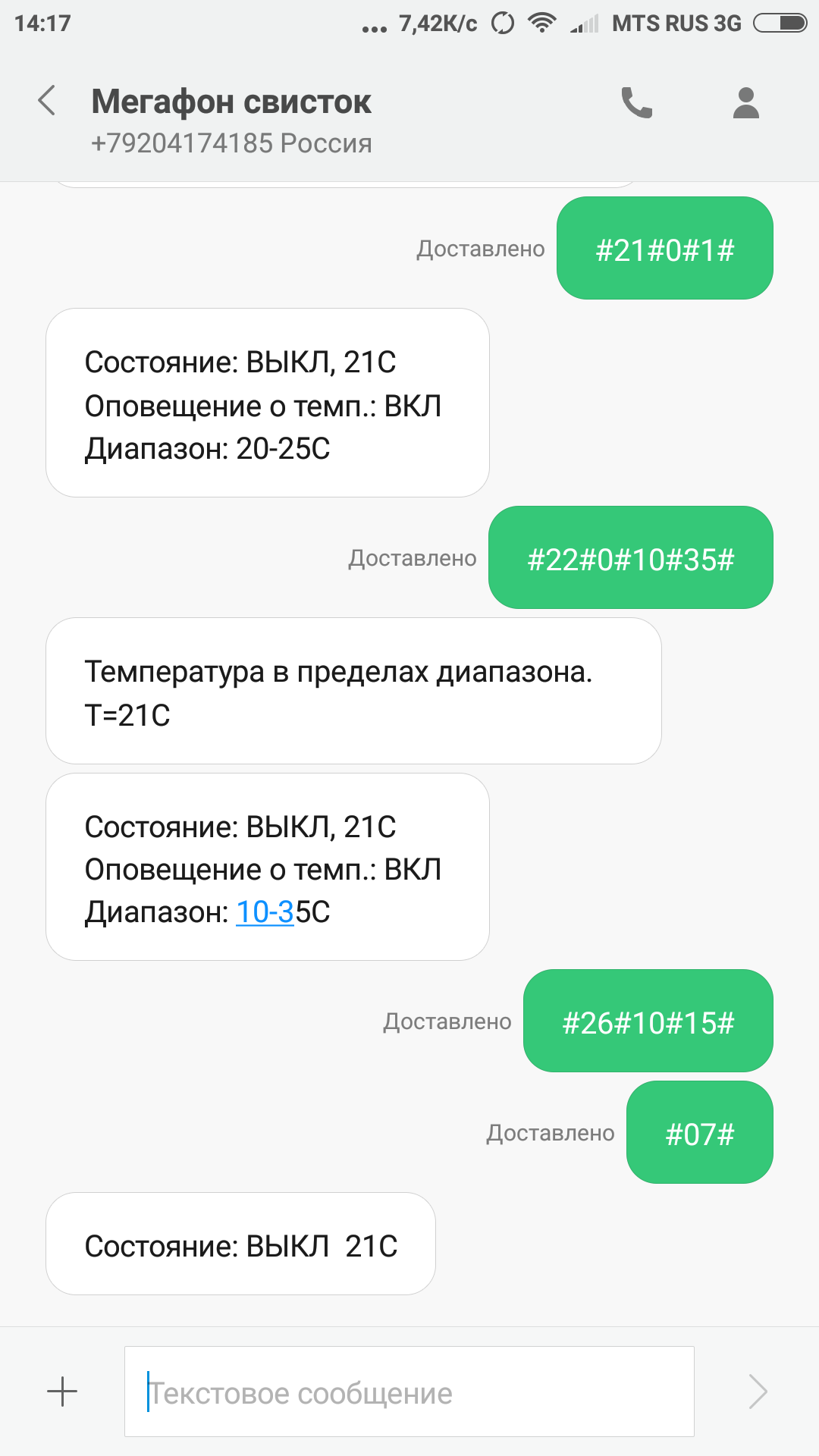
Another stand-alone outlet function is to enable and disable the timer / schedule load. Also quite understandable and sometimes demanded function. Another thing is that these two tasks can be implemented by much cheaper and simpler specialized devices - a thermostat socket and a timer socket, which are now sold in abundance. The advantages of GSM sockets are precisely in telemetry and remote control.
To do this, it has a GSM module in which (contacts to the front!) A SIM card is inserted.
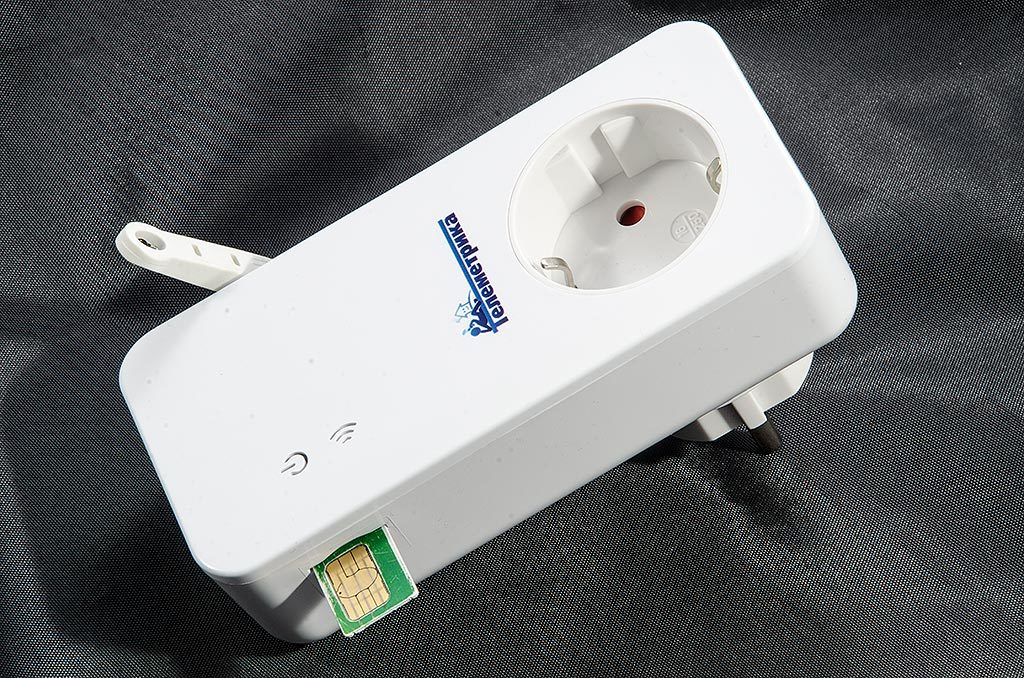
If you expect a plentiful correspondence with the device, then it is better, of course, to choose the same operator as the main phone - usually on-net SMS is either generally free or much cheaper than inter-operator. Unfortunately, now it seems that no one has any tariffs consisting of one SMS package (some time ago, the operators encountered offers that were sharpened specifically for telemetry devices), but the normal mode of operation is unlikely to ruin you - once set up and on only reports on triggers.
In addition to remote temperature control (by going beyond the limits of the range or on request # 07 #), the socket transmits another important information - loss / appearance of power. For owners of a country house equipped with a gas boiler, this is critical information - one can understand when the voltage has disappeared and when the stress has recovered and assess whether there is enough autonomous power supply for the boiler and the pump.
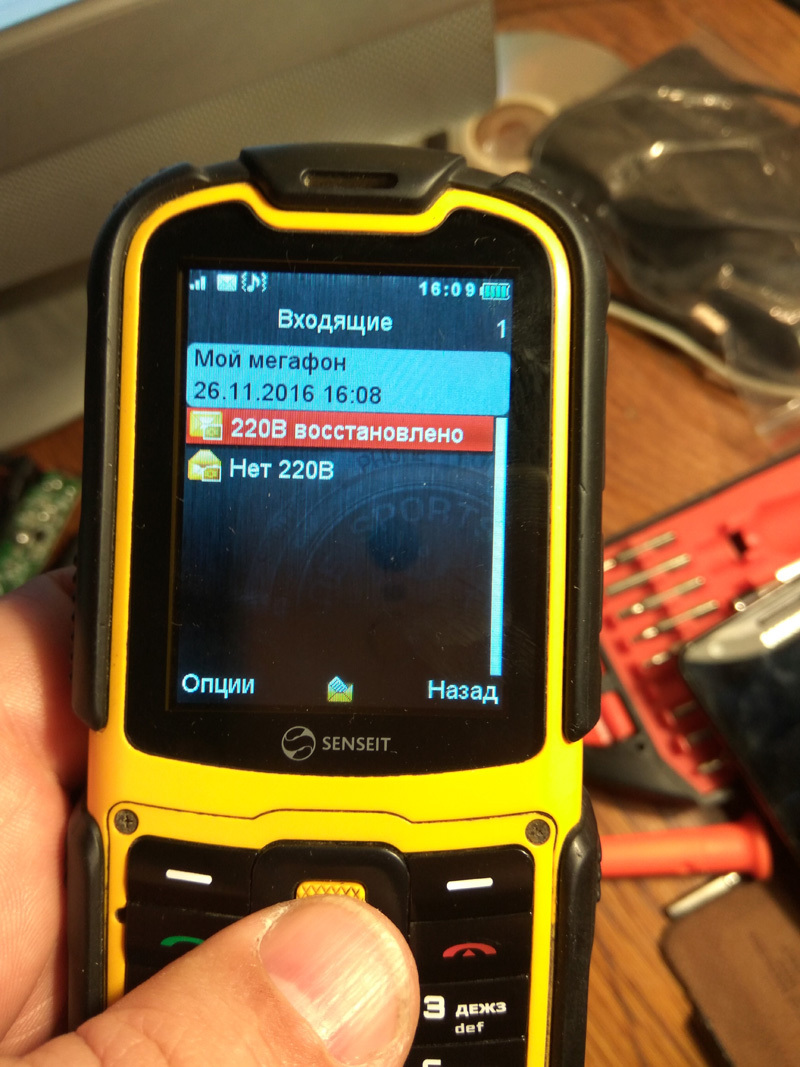
After all, if the boiler is cut down on the discharge of the battery of the bespereboynik, then it is urgent to go and run it back before the pipes are frozen. (Eternal winter concern gasified owners of suburban real estate).
There is also a triggering by “t-delta / time” - that is, by a rapid change in temperature in a short time (adjustable parameters). This is an indicator of an emergency in the room - if the temperature quickly rose, it could mean a fire, and if it fell quickly, then ... well, I do not know ... for example, did the wind shatter the window?
Another useful feature is switching the load on / off on command. This, of course, you can find many uses - from remotely restarting the router to remotely turning on the heaters before going to the cottage. This functionality is also in demand for me - while I am in the city, the house is supported by “barely plus” so that the pipes do not freeze, and when I gathered outside the city, it is possible to transfer the heating system to “turbo mode” right in the morning by turning on additional electric convectors . Then upon arrival the house is already well warmed up.
There is a button for manually switching on the load on the device case (it is generally the only button).

The USB connector is intended only for flashing, so you do not need to connect anything to it.
SMS management (unlike Senseit sockets, which work via the mobile Internet) is not tied to the mobile device platform and allows using the simplest phone.
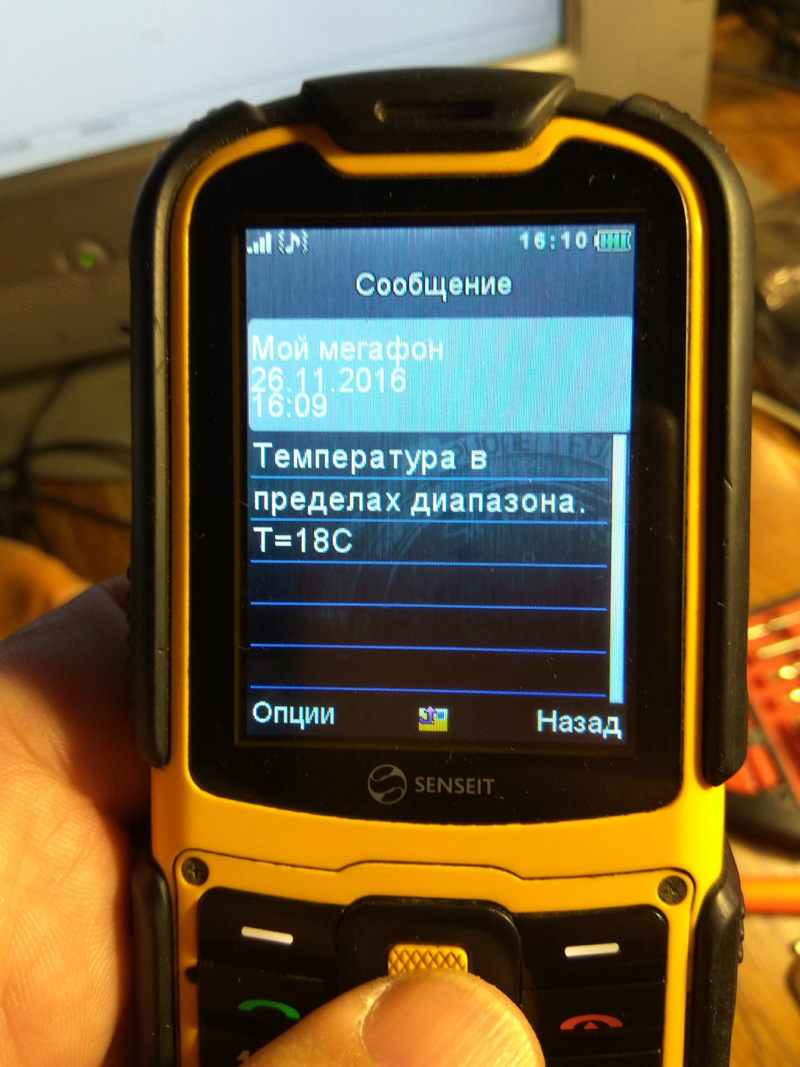
This has both advantages and disadvantages. Advantages - there is no dependence on the support of the service server manufacturer (if the same Senseit suddenly closes this topic, its socket will immediately turn into a pumpkin), and also, theoretically, SMS work where the mobile Internet does not work. Disadvantages - no visual visual interface to work with the device.
Although the application for iOS and Android under this outlet exists, it is quite primitive - in fact, it is a shell for sending SMS.
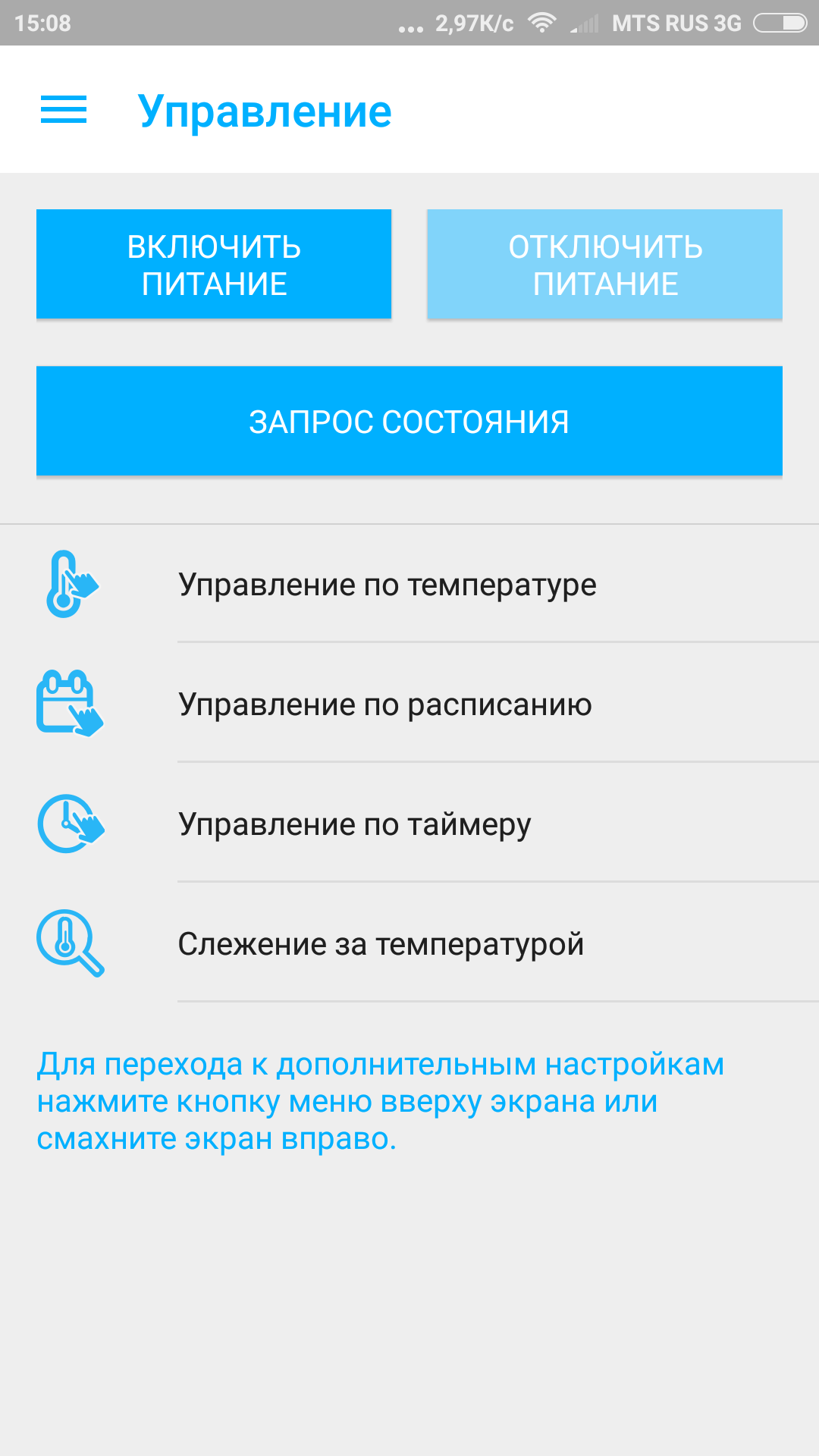

Conveniently, if you do not want to remember the command, but only. The manufacturer is clearly not enthusiastic about the idea that someone wants to disassemble its products, so the screws in the device are plugged with long, hard-to-remove plugs.
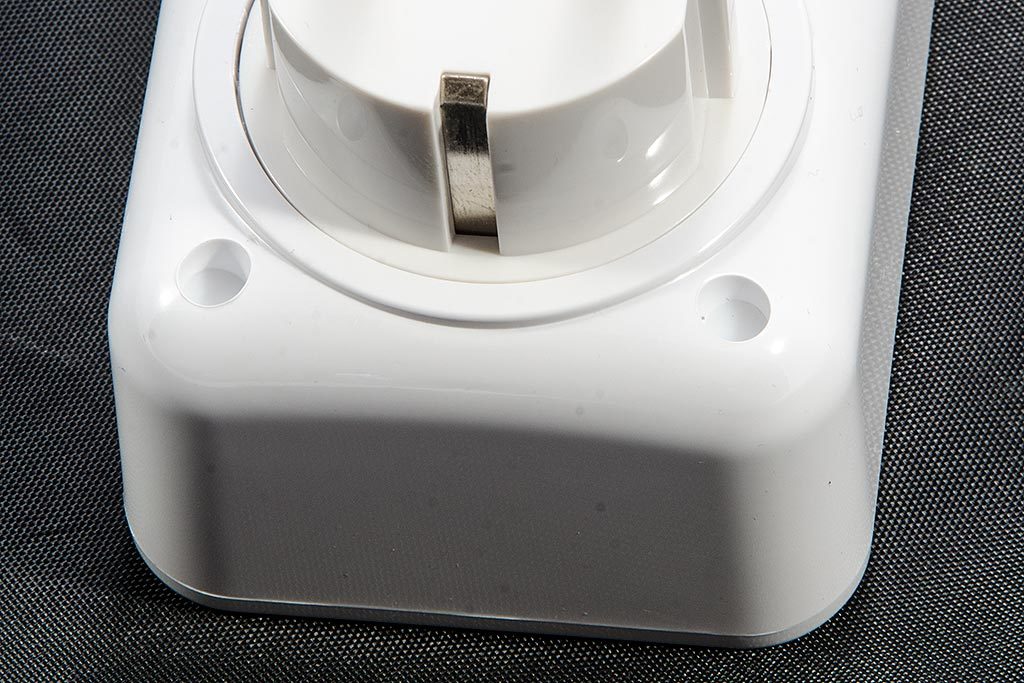
However, there are no obstacles to the inquiring mind (the author is not responsible for the consequences of the autopsy and does not at all urge readers to do this).
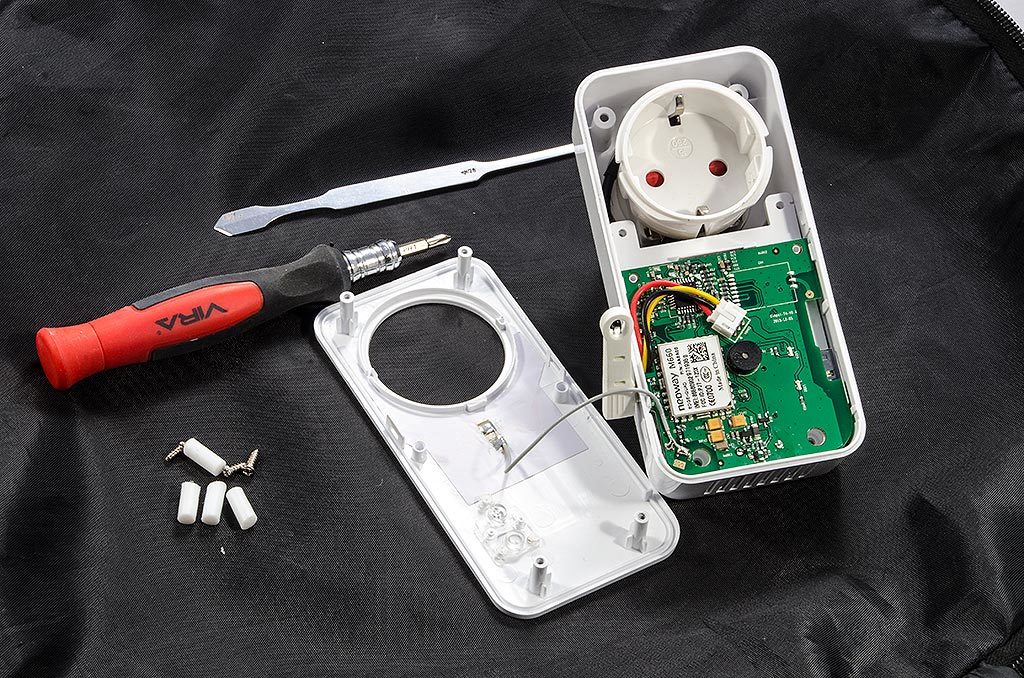
The internal device pleases with non-Chinese quality of soldering and good components - for example, an E9A ion sensor is installed (which is “nano” and left behind the brackets), which supports the outlet for a few minutes so that she can send a farewell SMS to the host “I die , but I do not give up "" The food is gone. "
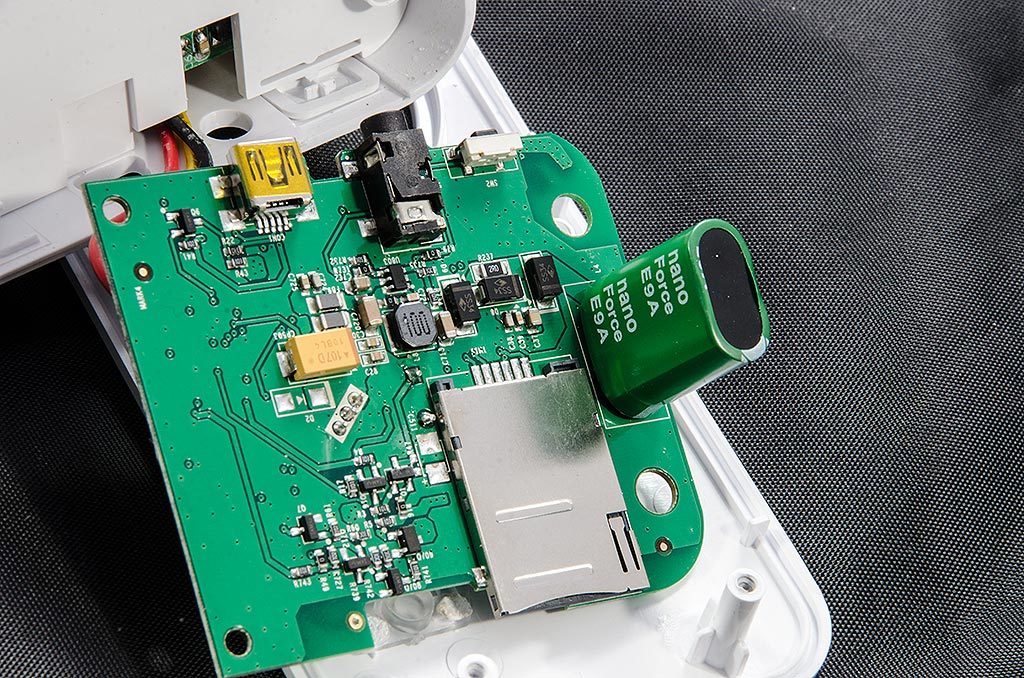
Also, a rather not bad (albeit Chinese) 16 – ampere JQX – 115F relay was used to control the load.

But I did not see the replaceable fuse for the load - this is, as for me, a minus. Declared load - 3 kW, for household heating devices that is enough. Here, in principle, and all the functionality. The device can not be called spectacular, so the video is quite short:
Findings:
With its price, the outlet from Telemetriki is quite a functional and well-made device. What I would like to add to it is the CRC9 connector for an external antenna - it is not particularly good at receiving a GSM signal. Regularly antenna film, glued from the inside to the front panel.
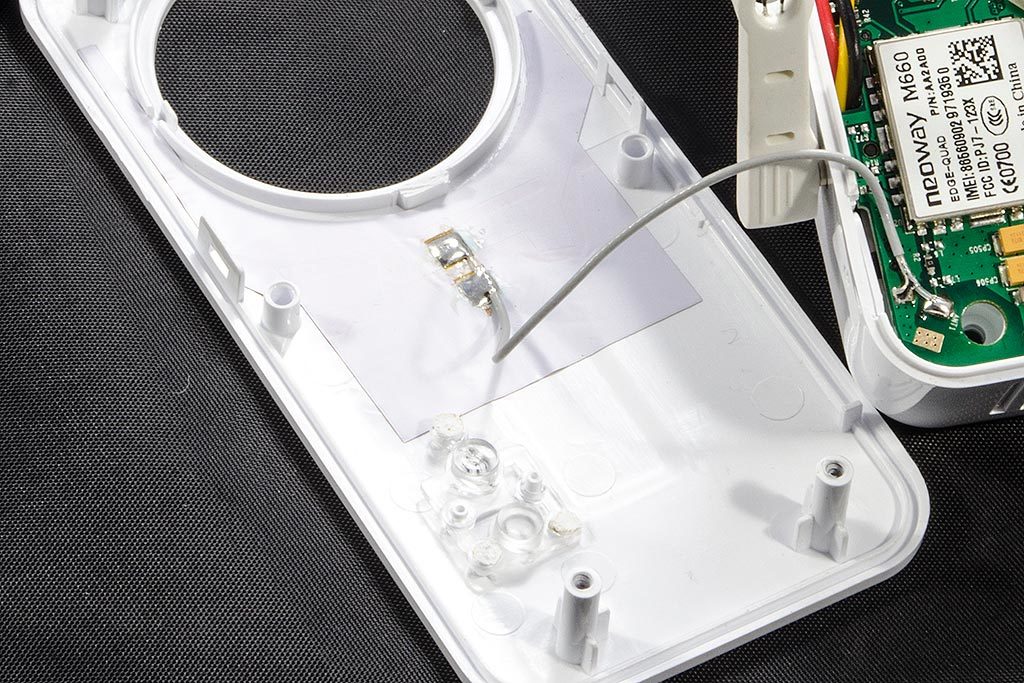
In a country house, she simply found herself in some rooms to work, although she saw the telephone of the same operator. (By the way, there is a message about a weak GSM signal, but for some reason, it has never been sent - apparently, the signal is either sufficient or not available at once).

If we compare it with the Senseit socket, then the functionality is less (it is also able to control Slave devices), but the price is noticeably lower. However, the question is rather theoretical, since there are no “Senseites” on sale now.
In the presence of a country house - thing mast hev. It is simple to build, works reliably, the range of applications of a wide, restful sleep of a homeowner pays back costs.
And if you write the word GEEKT-TM as a promotional code, you can purchase Telemetrika with a 10% discount on the Dadget page . The promotional code is valid 14 days from the date of publication of the review.
Pavel Ievlev, Voronezh
Information for bloggers and authors:
The company "Dadzhet" is interested in publishing independent objective reviews of dadzhetov in various kinds of media. The company “Djadzhet” will gladly provide dadzhetov bloggers and authors who want to test them and write a review.
The device after writing a review remains with the author. The company is not trying to tell the author what to write about our product, but asks to show the article before publication. In this case, it is possible to clarify information and prevent errors. Whether to consider company comments or not is always up to the discretion of the author. Read more ...

High-quality packaging, detailed instructions, pretty looking device.
')

Although, frankly, in terms of design, the Senseit socket looks more interesting - not so square, and the green rims fit it.

However, this, of course, not fundamental. So, what can such an outlet? For a start - and for me this is the main function - it has a thermal sensor.

It measures the temperature of the air in the room in which it is installed (It is also possible to install outdoors - the permissible modes for temperature / humidity allow, but it is necessary to close from water and the lower limit of measurement is minus ten).
I have an outlet installed in a country house, and I have the opportunity to control whether there is a critical drop (pipes will freeze!) Or a critical increase (is there a fire?) Of temperature. The socket allows you to adjust the temperature range, the output of which sends a signal SMS to either side.

In my specific conditions, this is important, but there are a number of functions that may be useful. For example - run load on the temperature.

Upon reaching the limits of the specified range, the socket can move from the “Load Off” position to the “Load On” position. If the “Heating” mode is set, then it is at the lower limit, if “Cooling”, then it is at the top. All this is configured by submitting intricate SMS commands, so it’s better not to lose the leadership with their table ...

Another stand-alone outlet function is to enable and disable the timer / schedule load. Also quite understandable and sometimes demanded function. Another thing is that these two tasks can be implemented by much cheaper and simpler specialized devices - a thermostat socket and a timer socket, which are now sold in abundance. The advantages of GSM sockets are precisely in telemetry and remote control.
To do this, it has a GSM module in which (contacts to the front!) A SIM card is inserted.

If you expect a plentiful correspondence with the device, then it is better, of course, to choose the same operator as the main phone - usually on-net SMS is either generally free or much cheaper than inter-operator. Unfortunately, now it seems that no one has any tariffs consisting of one SMS package (some time ago, the operators encountered offers that were sharpened specifically for telemetry devices), but the normal mode of operation is unlikely to ruin you - once set up and on only reports on triggers.
In addition to remote temperature control (by going beyond the limits of the range or on request # 07 #), the socket transmits another important information - loss / appearance of power. For owners of a country house equipped with a gas boiler, this is critical information - one can understand when the voltage has disappeared and when the stress has recovered and assess whether there is enough autonomous power supply for the boiler and the pump.

After all, if the boiler is cut down on the discharge of the battery of the bespereboynik, then it is urgent to go and run it back before the pipes are frozen. (Eternal winter concern gasified owners of suburban real estate).
There is also a triggering by “t-delta / time” - that is, by a rapid change in temperature in a short time (adjustable parameters). This is an indicator of an emergency in the room - if the temperature quickly rose, it could mean a fire, and if it fell quickly, then ... well, I do not know ... for example, did the wind shatter the window?
Another useful feature is switching the load on / off on command. This, of course, you can find many uses - from remotely restarting the router to remotely turning on the heaters before going to the cottage. This functionality is also in demand for me - while I am in the city, the house is supported by “barely plus” so that the pipes do not freeze, and when I gathered outside the city, it is possible to transfer the heating system to “turbo mode” right in the morning by turning on additional electric convectors . Then upon arrival the house is already well warmed up.
There is a button for manually switching on the load on the device case (it is generally the only button).

The USB connector is intended only for flashing, so you do not need to connect anything to it.
SMS management (unlike Senseit sockets, which work via the mobile Internet) is not tied to the mobile device platform and allows using the simplest phone.

This has both advantages and disadvantages. Advantages - there is no dependence on the support of the service server manufacturer (if the same Senseit suddenly closes this topic, its socket will immediately turn into a pumpkin), and also, theoretically, SMS work where the mobile Internet does not work. Disadvantages - no visual visual interface to work with the device.
Although the application for iOS and Android under this outlet exists, it is quite primitive - in fact, it is a shell for sending SMS.


Conveniently, if you do not want to remember the command, but only. The manufacturer is clearly not enthusiastic about the idea that someone wants to disassemble its products, so the screws in the device are plugged with long, hard-to-remove plugs.

However, there are no obstacles to the inquiring mind (the author is not responsible for the consequences of the autopsy and does not at all urge readers to do this).

The internal device pleases with non-Chinese quality of soldering and good components - for example, an E9A ion sensor is installed (which is “nano” and left behind the brackets), which supports the outlet for a few minutes so that she can send a farewell SMS to the host “I die , but I do not give up "" The food is gone. "

Also, a rather not bad (albeit Chinese) 16 – ampere JQX – 115F relay was used to control the load.

But I did not see the replaceable fuse for the load - this is, as for me, a minus. Declared load - 3 kW, for household heating devices that is enough. Here, in principle, and all the functionality. The device can not be called spectacular, so the video is quite short:
Findings:
With its price, the outlet from Telemetriki is quite a functional and well-made device. What I would like to add to it is the CRC9 connector for an external antenna - it is not particularly good at receiving a GSM signal. Regularly antenna film, glued from the inside to the front panel.

In a country house, she simply found herself in some rooms to work, although she saw the telephone of the same operator. (By the way, there is a message about a weak GSM signal, but for some reason, it has never been sent - apparently, the signal is either sufficient or not available at once).

If we compare it with the Senseit socket, then the functionality is less (it is also able to control Slave devices), but the price is noticeably lower. However, the question is rather theoretical, since there are no “Senseites” on sale now.
In the presence of a country house - thing mast hev. It is simple to build, works reliably, the range of applications of a wide, restful sleep of a homeowner pays back costs.
And if you write the word GEEKT-TM as a promotional code, you can purchase Telemetrika with a 10% discount on the Dadget page . The promotional code is valid 14 days from the date of publication of the review.
Pavel Ievlev, Voronezh
Information for bloggers and authors:
The company "Dadzhet" is interested in publishing independent objective reviews of dadzhetov in various kinds of media. The company “Djadzhet” will gladly provide dadzhetov bloggers and authors who want to test them and write a review.
The device after writing a review remains with the author. The company is not trying to tell the author what to write about our product, but asks to show the article before publication. In this case, it is possible to clarify information and prevent errors. Whether to consider company comments or not is always up to the discretion of the author. Read more ...
Source: https://habr.com/ru/post/372919/
All Articles